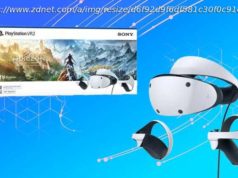With an Intel Core i7-7700HQ processor and an Nvidia GeForce GTX 1060 GPU, Lenovo’s Legion Y720 packs a lot of power. Here’s our review of the company’s new Windows 10 gaming laptop.
Back at CES, Lenovo announced its new brand of gaming laptops: Legion, starting with the Y520 and Y720. The latter is the more powerful of the two, coming with an Intel Core i7-7700HQ processor, 16GB RAM, and an Nvidia GeForce GTX 1060 with 6GB GDDR5.
Weighing in at 7.05 pounds, it’s a pretty beastly machine. I was sent the one with a 15.6-inch 1080p anti-glare display, but you can get one with a glossy 4K screen as well.
There’s no built-in Windows Hello support or a touchscreen, but it contains more gaming-centric features, like an integrated Xbox Wireless Adapter.
Starting at $1,099 with a Core i5 CPU, 8GB RAM, and a 1TB HDD, the Legion Y720 can pack some power on not too heavy of a budget. Here’s our review:
Up to 2TB 5400 RPM HDD
Up to 1TB PCIe SSD
Dual Drive Configurations available. (HDD + SSD)
15.6″ UHD (3840 x 2160) LED Backlit IPS Glossy with integrated camera
15.6″ FHD (1920 x 1080) IPS Anti-Glare LED Backlit with integrated camera
3 x USB 3.0
1 x HDMI
Thunderbolt (USB Type-C)
Audio / Microphone combo Jack
RJ45 LAN
DisplayPort
The Lenovo Legion Y720 is a cool-looking machine, as gaming laptops tend to be. You probably won’t be bringing this to the office and setting it up on your desk; well, unless you’re a professional gamer or something, or a tech reviewer.
It comes in any color that you want, as long as it’s black. The rest of the device is accented in red, with a border around the trackpad and red JBL speakers above the keyboard. Also, the RGB keyboard is ‘R’ when you first boot it up, although that’s configurable to be pretty much any color you want.
As noted in the specs, there’s no shortage of ports on the Y720, which is super-helpful in day-to-day use. On the right side, you’ll find Thunderbolt 3, HDMI, two USB Type-A, and one Mini DisplayPort. On the left is an additional USB Type-A port, 3.5mm headset jack (both input and output) , Ethernet, and power.
The device is charged using Lenovo’s proprietary charging cable, which is frankly a little disappointing. I’d like to see as many devices as possible use a standard like USB Type-C, especially given that the Y720 doesn’t have the best battery life (battery life can be forgiven, but we’ll come back to that) .
At over an inch thick and over seven pounds, it’s not too heavy when compared to other gaming laptops, although it’s very heavy compared to other devices. If you’re a serious gamer and you need to travel a lot, this machine could work well. Other gaming laptops, such as Lenovo’s bigger Legion Y920, come in at over 10 pounds.
The Lenovo Legion Y720 is available with an anti-glare 1080p or a glossy 4K LCD. I don’t say this much, but I think that 1080p is the way to go here. For one thing, battery life on such a powerful machine isn’t great, and 4K would make it even worse.
And while I’ve never said that 1080p is an optimal resolution for a laptop – especially one with a 15.6-inch display – the anti-glare aspect of it is clutch. When playing a game, reflections on the display could distract your gameplay, and block your line of sight, possibly causing you to miss something important.
If you really want 4K, you can always hook up to an external monitor if you want. There are plenty of ports for that, as it includes HDMI, Mini DisplayPort, and Thunderbolt 3. The latter doubles as a USB Type-C port, and you can use it to connect to two 4K screens or a single 5K monitor.
I found the lack of a touchscreen to be disappointing, as I’ve grown accustomed to them in Windows devices. A non-touchscreen isn’t even uncommon in gaming laptops, but I’m a fan of a consistent experience across all devices.
I’m in possession of both a Legion Y720 and the more powerful Legion Y920. The one thing that I like a lot more about the Y720 is the keyboard. While it’s great for gaming, it’s also suitable for work, meaning that I can type up an article on it if I want to.
Obviously, this is a machine that costs a lot of money, so that type of dual usage is important. Also, I realize that many gamers might not care about this at all, but it’s certainly worth noting.
Of course, the keyboard is backlit, which is configurable through the Lenovo Nerve Sense application. It’s divided into four parts, and you can choose between 19 different colors for each one, or no lighting at all.
Nerve Sense provides a number of other customization options as well, such as adding the ability to turn on the Extreme Cooling feature with a keyboard shortcut. You can also set it so that the trackpad and Windows key are disabled during gameplay to prevent accidental input, and you’ll also be able to create a keyboard shortcut that allows you to use them when you need to.
One keyboard feature that I found particularly cool is that there’s a dedicated screen recording button. I liked this because I hate that in 2017, I still usually have to use third-party software to record my screen, so it’s helpful to have one built into the device. The button is right next to the Ctrl button on the right side, and you can just press it once to start recording, and press it again to stop; the video will be saved to the Videos folder.
Lenovo says that the Legion Y720 should get up to five hours of battery life, and I’ve found this number to be a bit generous. After all, much of the time that I’ve spent testing it have been playing games – I assume that’s how most people will be using it – and that uses quite a bit of juice.
In reality, I’ve found that it gets more like three or four hours of battery life, and as I mentioned earlier, I think that can be forgiven. This is some powerful hardware, so if you want power, you can’t be surprised when it uses power. Intel has done a lot to make its Y- and U-series chips very power-efficient, but this is an HQ-series processor, meaning that it’s pretty much in beast mode.
The only real drawback to this is that you can’t play games for long without being connected to power. In fact, after getting a feel for how much I’d get out of it, I rarely used it without being connected to a power supply at all.
Lenovo boasts that the Legion Y720 is the first laptop to use Dolby Atmos, and it sounds phenomenal. You’re not going to need external speakers with this machine, as the built-in JBL speakers can get pretty loud.
Like Huawei’s MateBook X, which also includes the feature, includes a Dolby Atmos app so you can configure it.
You can set the app to various preset audio profiles, including Movie, Music, Game, and Voice, or if you’re lazy like I am, you can set it to Dynamic, and the system will try to determine what type of audio content you’re consuming. I’ve found that it’s pretty good at it, by switching between the default Dynamic setting and what it should be imitating.
And then there’s the Personalize settings, which offers an equalizer, Surround Virtualizer, Dialogue Enhancer, and Volume Leveler, just in case you don’t trust any of the other settings.
Ultimately, the speakers sound fantastic, and you’re probably not going to find yourself configuring them at all.






